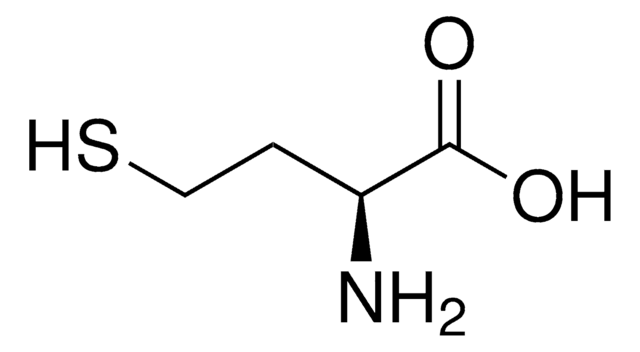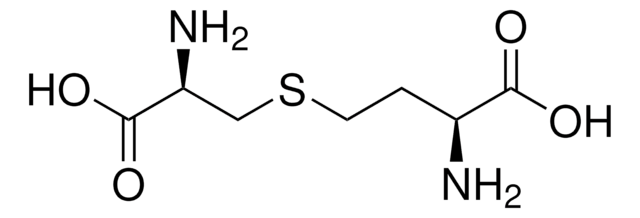73097
L-Argininosuccinic acid lithium salt
≥95% (TLC)
Sinónimos:
N-{{[(4S)-4-Amino-4-carboxybutyl]amino}iminomethyl}-L-aspartic acid lithium salt, Lithium L-argininosuccinate
About This Item
Productos recomendados
Quality Level
assay
≥70% (qNMR)
≥95% (TLC)
form
powder or crystals
optical activity
[α]/D 15±2°, c = 1 in H2O
impurities
≤20% water
color
white to off-white
storage temp.
2-8°C
SMILES string
OC(C[C@@H](C(O)=O)NC(NCCC[C@H](N)C(O)=O)=N)=O.[Li+]
InChI
1S/C10H18N4O6.Li/c11-5(8(17)18)2-1-3-13-10(12)14-6(9(19)20)4-7(15)16;/h5-6H,1-4,11H2,(H,15,16)(H,17,18)(H,19,20)(H3,12,13,14);/q;+1/t5-,6-;/m0./s1
InChI key
MGJRREWOOITZBB-GEMLJDPKSA-N
¿Está buscando productos similares? Visita Guía de comparación de productos
Biochem/physiol Actions
Storage Class
11 - Combustible Solids
wgk_germany
WGK 3
Elija entre una de las versiones más recientes:
¿Ya tiene este producto?
Encuentre la documentación para los productos que ha comprado recientemente en la Biblioteca de documentos.
Los clientes también vieron
Nuestro equipo de científicos tiene experiencia en todas las áreas de investigación: Ciencias de la vida, Ciencia de los materiales, Síntesis química, Cromatografía, Analítica y muchas otras.
Póngase en contacto con el Servicio técnico











